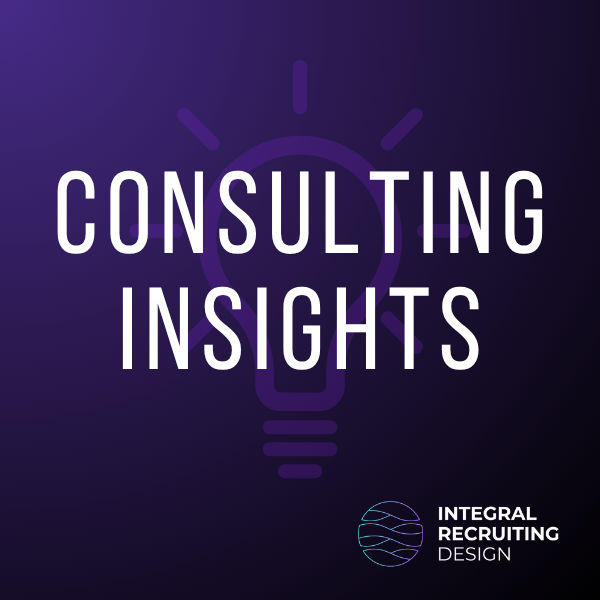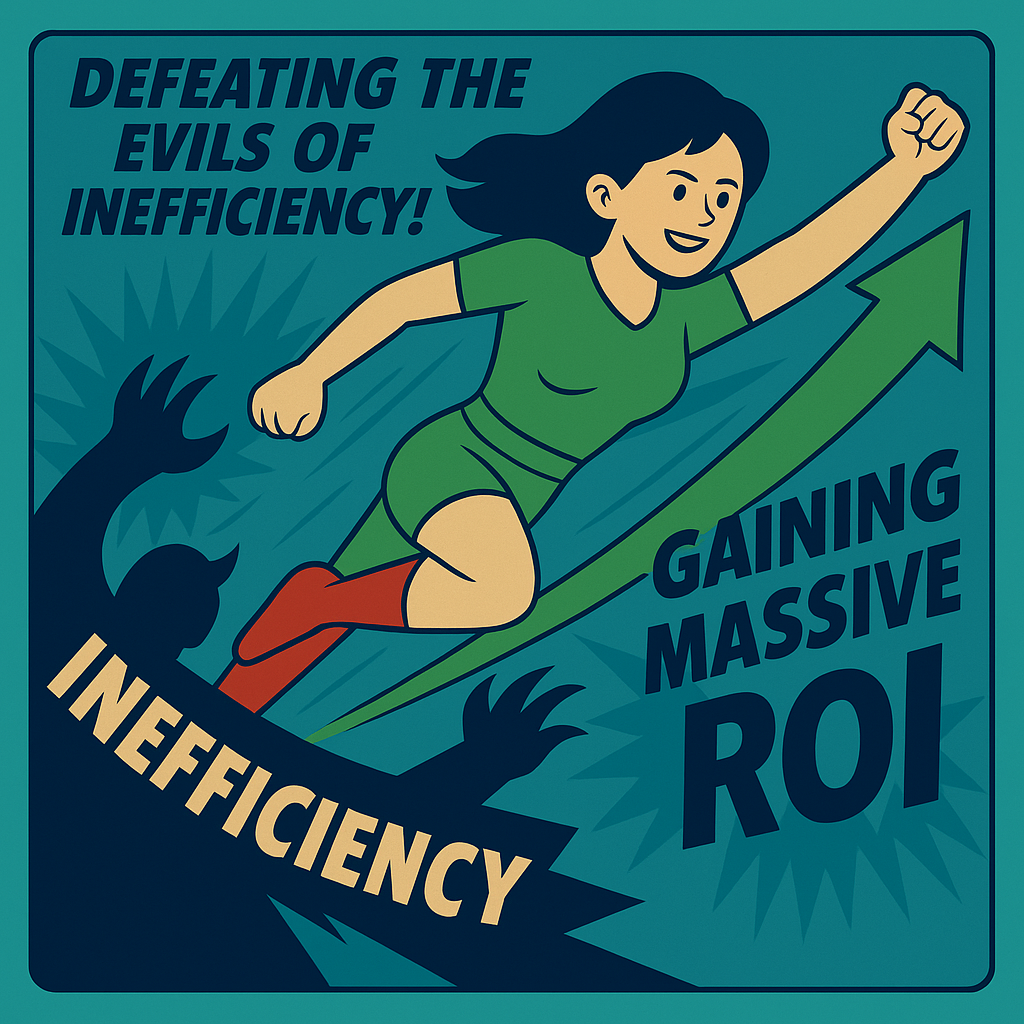Top Lessons from Seasoned iCIMS Consultant Paul Day
In this IRD Team Member Spotlight, I sat down with Paul Day, HR Solutions Architect at Integral Recruiting Design. Paul is someone I work with every day, and yet I still walked away from our conversation with a deeper appreciation for his thoughtfulness, his clarity, and his values as a system administrator and consultant.
Paul has helped dozens of iCIMS customers make the most of their HR technology investments. His story—from stumbling into system admin work at QuickChek to advising enterprise clients through complex iCIMS optimization projects—captures the journey of so many HR system administrators: learning by doing, building by listening, and discovering joy in the work of making things better for other people.
Below are some of the highlights from our conversation, reflecting Paul’s insights into iCIMS, HR technology, and the people who use it every day.
📽️ Watch the full conversation below:
Start With What Clicks
Paul’s entry into the world of HR tech came from seeing a problem no one else was solving. “I saw this gap… where nobody was managing iCIMS,” he said. “It just kind of sat there.” That realization became his entry point into systems work—and his first sense of the impact a single thoughtful admin could have.
What hooked him was how a seemingly small change—like adjusting a dashboard—could bring outsized benefits. “I noticed small dashboard adjustments that would make people jump up and down!”
Paul’s core principle in all of this? Reducing unnecessary clicks.
Each click is one click inside a platform, but when you leave the platform—say to write an email—that click is like two clicks. There’s the cognitive load of switching systems.
He continued: “People don’t take into account errors and glitches that happen every day. You swap a system, something doesn’t load. Technology, security, bandwidth—they all introduce friction. The less you have to leave your platform, the more efficient you become.
This is the kind of thinking that defines iCIMS optimization at its best—not a laundry list of features, but a real commitment to reducing friction in the workday.
A Better Way to Manage Distraction
Paul and I both related to the challenge of focus in a world of screens and notifications. “I used to always work with two monitors,” Paul said. “The second one was always Slack and email… it derailed me.”
Reducing distractions is part of how Paul lives out his core value as a consultant: protecting end users. “When I implement a system,” he said, “I’m always thinking about the end user. What are they going to have to click? What are they going to see?”
This mindset reflects an ethic we try to bring to every project: strategic design with a human touch. That might mean removing a few steps from a process. It might mean eliminating a toggle tax between platforms. But always, it’s rooted in the question: How can this be easier?
Plan First, Then Optimize
When I asked Paul how his view of HR systems has changed over time, he said something that stuck with me: “Back then, I thought the systems were just messy. Now I think, wow, we just don’t know what we’re doing.”
That wasn’t a critique—it was a reflection on how much of the pain organizations experience could be prevented with better planning. “A lot of it could have been avoided with proper scoping,” he said.
Integration issues are the number one complaint. And most people don’t realize that you, as the customer, have the ability to decide what kind of integration you’re going to do.
It’s a reminder that good iCIMS consulting is about helping clients ask the right questions at the right time—and bringing enough experience to anticipate issues before they arise.
Ask Why Before You Build
When clients ask Paul to make a change, his first instinct is to pause. “I try not to give answers right away,” he said. “I ask: Why are we doing this? What’s the process for the end user?”
That orientation toward inquiry shapes how Paul builds trust. He doesn’t offer the quick fix. He walks through the process. He brings in test users. He surfaces unspoken complexity. “Sometimes clients adjust their whole approach once they see it from the end user’s side.”
That’s not just good consulting—it’s good system stewardship.
Speak Human, Not Jargon
Paul has a gift for explaining complex topics without overwhelming non-technical stakeholders. When I asked him how he does it, he shrugged. “I just keep it real with people.”
He prefers showing rather than telling. “I don’t speak iCIMS,” he said. “I talk about what it can do, not just what it is.”
And he adapts. “I adjust to my audience,” he explained. “Some clients want the technical details. Others don’t. You have to get to know who you’re talking to.”
This flexibility is part of what makes Paul such a valuable partner in our iCIMS managed services work—he meets clients where they are, and brings them along at the right pace.
Document Everything
One of the most actionable pieces of advice Paul shared was deceptively simple: “Start a spreadsheet.”
He recommends every new HR system administrator start documenting what they learn from day one. “Document how things work. Write down what you learn from tickets. Build your own master doc.”
It doesn’t have to be fancy. But it will make you—and the people who come after you—much more effective. “That’s the roadmap for the future,” he said. “You can load that into ChatGPT and ask it questions.”
We’ve learned the same lesson at IRD—documentation isn’t just about compliance. It’s about continuity. And it’s one of the most overlooked levers for increasing iCIMS ROI.
DEI and the Future of HR Systems
Later in our conversation, we talked about the cultural changes happening in our field—especially around DEI.
“I don’t think people understand what DEI really means,” Paul said. “We’ve always been taught that diverse teams come up with better ideas. But now it feels like we’re taking a step backward.”
Paul shared a difficult story about a hiring manager dismissing a candidate based on style, not skill—and how that moment deepened his commitment to inclusive practices. “Unconscious bias training is not a bad thing. Learning about imperfections in yourself is never a bad thing.”
In a world where HR technology often reflects our organizational values, Paul’s clarity on this issue is refreshing. Inclusion, for him, isn’t a buzzword. It’s a necessary part of system design.
Where AI Fits—and Where It Doesn’t
Paul has spent the past year deeply engaged with AI tools, especially when it comes to parsing technical documentation and designing better workflows.
“I don’t think AI should be used to screen candidates,” he said. “You don’t know what it’s missing.”
Instead, he sees AI as a support tool—for system admins, for documentation, for learning. “Paste your documentation into ChatGPT and ask it to explain things. That’s how I use it.”
It’s a simple but powerful reframe: AI not as a decision-maker, but as an explainer. Not a filter, but a flashlight.
Advice for New System Admins
To anyone entering the field, Paul had two pieces of advice:
-
Document everything.
-
Keep asking questions.
And perhaps just as importantly: “Don’t take no for an answer. Just because someone says iCIMS can’t do it natively, doesn’t mean there isn’t a way.”
This spirit of possibility is what we aim to cultivate at IRD through our iCIMS consulting and System Admin Insights community.
Let Curiosity Be Your Guide
Paul’s final reflection was personal: “I used to go so fast. I would get excited and move quickly. Now, I’d tell my younger self to slow down and soak it in.”
In a world of rushing, toggling, and burnout, this might be the best advice of all.




